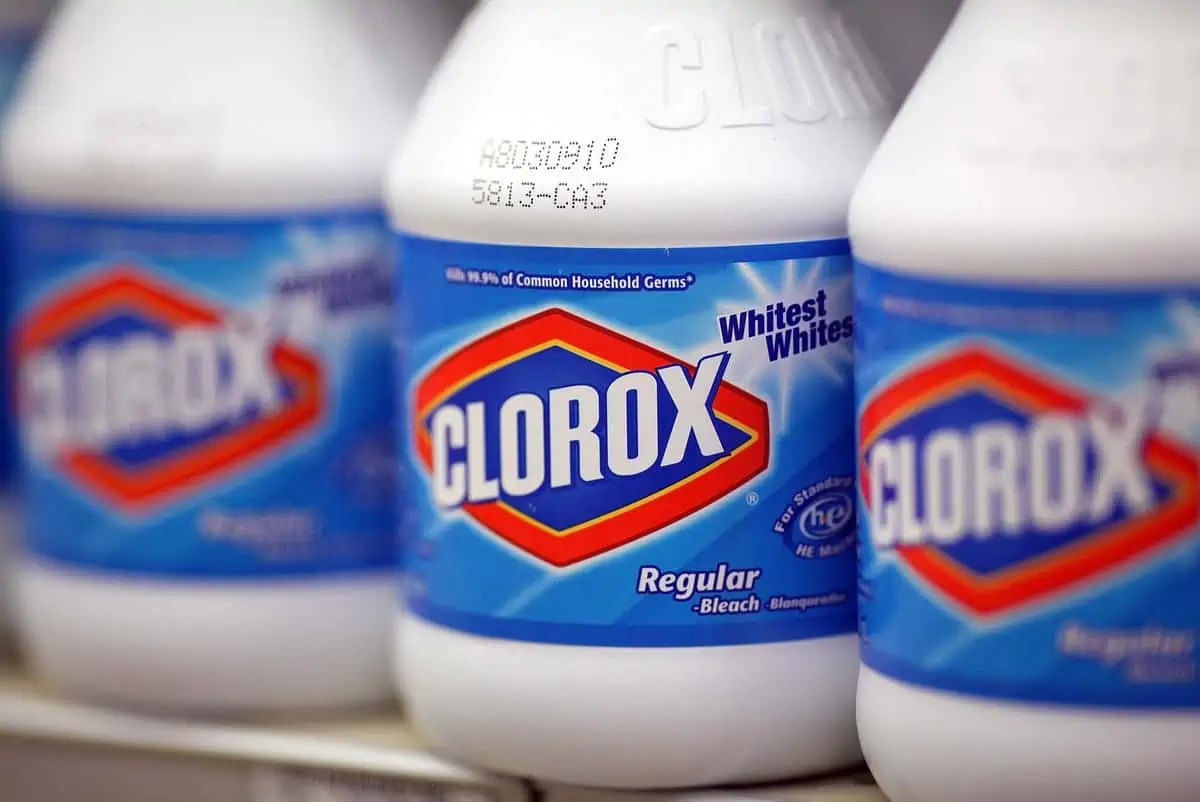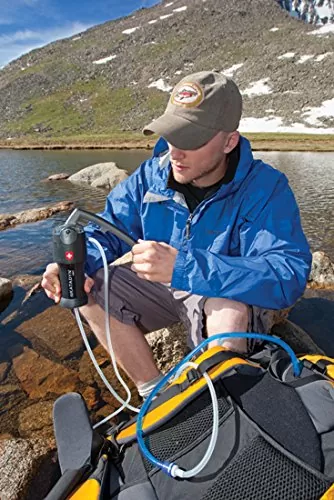One of the top survival priorities in an emergency is to find and purify water to supply your needs.
Whether your crisis situation is unfolding in the desert after becoming lost or in your own home after a natural disaster, the human body can only last three days without any drinking water at all.
Related Post: How To Go-Off Grid Step-By-Step
Purify Water
Why Is It Important To Purify Water
Here are some of the top reasons as to why you need water purification.
Reason To Purify Water #1
Lower Cancer Risk
Chemicals and other toxic materials can make their way into water sources, which increases the risk of getting some types of cancer.
Eliminating these through water purification might help lower your risk of getting cancer that is associated with exposure to these materials.
Reason To Purify Water #2
Improved Flavor
Some contaminants do more than pose a health risk. They can also affect the flavor of drinking water, such as giving it a metallic taste or another unpleasant taste.
Purifying water helps get rid of these contaminants, which can improve the flavor of drinking water without having to boil it.
Reason To Purify Water #3
Reduced Chlorine Levels
Chlorine in drinking water can cause a wide range of serious health issues. These include the following:
- Higher risk of cancer
- Cardiovascular problems
- Asthma
- Birth defects
Using water purification Charlotte systems helps get rid of chlorine in drinking water, which reduces your risk of these health problems.
This helps keep you and your family safe from illnesses and can improve your overall quality of life.
Reason To Purify Water #4
Fewer Plumbing Contaminants
If you live in an older home, your pipes and plumbing system can introduce copper and other contaminants into your water supply.
Even though your local water supply is treated, these contaminants are able to enter your home as water flows through old, corroded pipes. Purifying your water helps keep these materials out of your drinking water.
Reason To Purify Water #5
Lower Bacteria Levels
E. coli and other bacteria can cause serious illnesses when you’re exposed to them in your drinking water.
While some of these bacteria might cause mild symptoms, such as nausea, others can be life-threatening, especially in children, older adults and those with conditions that lower their immunity.
A Charlotte water purification system helps ensure that your drinking water is free of these potentially dangerous types of bacteria.
Reason To Purify Water #6
Healthier Foods and Beverages
Water purification systems do more for you than just provide you with drinking water that does not have contaminants.
It also gives you a steady supply of purified water that can be used for other purposes, such as rinsing off vegetables and other produce, preparing meals and brewing coffee or tea.
This can help your foods and beverages taste fresher and provide you with peace of mind that what you eat and drink is free of potentially harmful contaminants.
Reason To Purify Water #7
Healthier Pets and Plants
Water purification doesn’t just benefit you. It also benefits your pets and plants. Using purified water when you fill your pets’ water bowls helps lower their risk of exposure to pollutants that might affect their health.
Watering your plants with purified supplies of water also helps reduce their risk of being harmed by certain kinds of materials that can enter your water supply.
As you can see, Charlotte water purification is critical step towards living a healthier, more sustainable lifestyle. If you have any questions regarding your home’s water supply or as to why you need water purfication, please don’t hesitate to give our team of experts a call.
Here’s What To Do Before You Purify Water
Before you can disinfect the water, you have to find it.
Depending on your location and situation, water can be abundant or virtually non-existent. Water can come from freshwater surface sources like streams, creeks, ponds, and lakes.
If you are able to distill the water, you can even use brackish or salty water as a source.
Let’s not forget precipitation as an emergency water supply. Rain, snow, sleet, hail, ice, and dew can be collected for water.
Fresh rain that didn’t fall through a jungle or forest canopy should be safe enough to drink as is. New snow can be melted for drinking without processing as well.
Water issuing from springs and other underground sources can also be safe in most areas. Water coming from tapped trees like maple and birch can be safe to drink and abundant in late winter. But most other water sources should be considered “dirty” and must be disinfected with one of the following methods.
Related post: 5 Best Water Storage Solutions & Blunders To Avoid
5 Ways To Purify Water
1. How To Purify Water by Boiling
The simplest way to purify water in the wild is to boil it. To do this, you’ll need (I bet you can guess) a container and fire. To actually purify the water, you’ll need to let it boil steadily for 10 minutes.
Some say one minute is fine while others recommend a minimum of seven minutes. In my honest and very frank opinion, the longer you boil water, the “deader” those nasty little sickness-inducing microorganisms will be.
Remember, the last thing you want to happen to you in a survival situation is to get sick. Don’t forget: the higher the altitude, the longer the boiling time.
2. How To Purify Water by Chemical Treatment
Another way you can make water safe for drinking is to chemically treat it, and you can bet your thirsty little gizzard there are a number of chemicals which will do the trick.
Some examples are:
- Iodine tablets,
- Hydrogen Peroxide,
- Sodium Chlorite,
- and household bleach (yes bleach).
Some of these chemicals are actually already sold as water purification tablets designed specifically for campers, hikers, and survivalists. These tablets are pretty easy to use.
Simply drop the correct number of tablets into your container filled with water and let the tablets work their magic. Usually, the water is safe to drink after about 30 minutes (so you’ll have to be patient).
Be sure to check the manufacturer’s instructions before you use these tablets.
Plain old household bleach – one which has no scents, cleaners, or manufactured to be color safe – is also a good water purifier if you know what you’re doing, but be careful!
This is how to purify water with bleach: Add around 1/8 teaspoon of the bleach to a gallon of water and let the bleach do its thing for no less than 30 minutes.
Similarly, mix 5-10 drops of iodine (specifically 2% tincture of iodine) for every liter of water and wait for a minimum of 30 minutes.
3. How To Purify Water with Filters
The two main types of water filters in use today are pump-action filters and drip/suction filters.
The former utilize a pump to force raw water through a filter cartridge. The latter are filter cartridges that use a gravity drip action (like an IV bag) or are placed in line on hydration bladder hoses.
When used on a hydration bladder, the user simply sucks water through the filter as needed. My favorite (for years now) is the Katadyn Pocket filter.
It has a ceramic cartridge with silver imbedded inside. The ceramic filters out the larger pathogens, and the silver kills or disables smaller organisms like viruses.
Most filters like this will pump about a quart per minute. If time isn’t an issue, you might opt for a gravity-fed system like the one shown here.
4. How to Purify Water with Natural Materials
One of the most primitive ways on how to filter water is by using soil or sand. To do this, you’ll need to create a makeshift filter which will hold the sand or soil and clean your water.
Follow these simple steps below:
- Get a container (perhaps your empty water bottle?) and place your shirt over it.
- Place sand or soil on top of the cloth. This will be your makeshift filter.
- Pour the water over your makeshift filter to remove any sediments and particles in your water. Repeat this process several times until your water is looking clear.
Another method is to dig a hole near the location of your water source and drink the water which seeps into a hole filtered by the soil surrounding it.
However, keep in mind this method does not guarantee microorganisms such as bacteria are no longer contaminating your filtered water.
5. How To Purify Water with Survival Straws
One of the smallest, lightest of water disinfecting tools to hit the marketplace lately is the straw style of water filter.
Newer models can be used as you would a drinking straw and can also connect to the drain valve on a water heater to clean up the water you might find in a water heater after a disaster.
They can also fit onto a garden hose to filter the water running through it.
Don’t expect it to filter out every single virus or bacteria that could be growing in there, though—especially a hose that’s been laying in the sun, or a water heater full of tepid water after a prolonged power outage.
Most of these filters contain an activated carbon filter element, which not only filters out larger bacteria and pathogens, but also removes odd flavors and odors from the water.
Whichever method you choose to use, pay close attention to the signals your body is giving you. Staying hydrated, whether or not you are in a survival situation, is absolutely essential to your well-being.
If you find yourself in a less than ideal situation, remember these tips for hydration and these wise words from Bear Grylls: “Keep your head about you, use common sense, don’t panic, and above all think outside the box!”
What do you think of these methods of how to purify water in the wild? Let us know in the comments section below!




